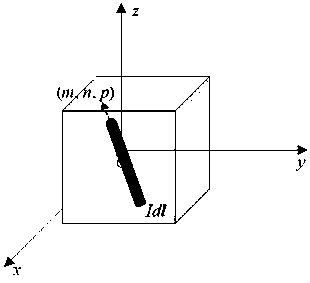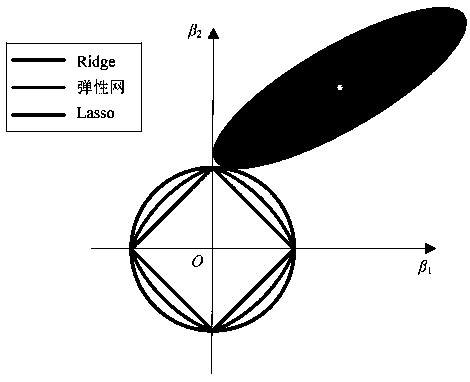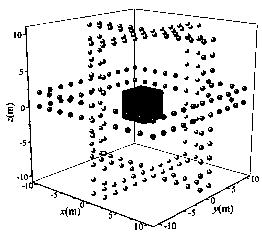Current element three-dimensional inversion method based on algebraic elastic network regularization method
A current element and algebraic technology, applied in electrical digital data processing, design optimization/simulation, special data processing applications, etc., can solve problems such as non-continuity of solutions and non-unique solutions
- Summary
- Abstract
- Description
- Claims
- Application Information
AI Technical Summary
Problems solved by technology
Method used
Image
Examples
Embodiment 1
[0143] image 3 is the structural representation of the distributed current element inversion calculation model described in the present invention, such as image 3 As shown, according to the derivation of the above algorithm, analyze the 3D imaging results of the current element based on the algebraic regularization method, construct the following image 3 Computational model of the shown structure. The points represent the measurement points of the three-dimensional magnetic field strength, and the planes of the three measurement points are respectively parallel to xy , yz with xz Plane, the size of each plane is 20m×20m, the distance between measurement points on the same plane is 1m, and the total number of measurement points is 264. The central cube area in the figure is the calculated current element area, and the side length of this area is 4.5m, and each independent current element in this area is set as a cube with a side length of 0.5m, so there are 729 waitin...
Embodiment 2
[0146] On the basis of Example 1, for the current element distribution in Case 1, when the theoretical value of the magnetic field is superimposed with random relative errors between ±0.5%, ±2% and ±5%, three regularization methods are used Calculated as Figure 5 Image 6 As shown, the distribution of current elements obtained by the Ridge regularization method is the densest, which is consistent with the average distribution of the calculation results. Although the ability to locate the current elements is poor, the direction of the larger current element values in the calculation results Consistent with the direction of the preset current element. The current element distribution obtained by the Lasso regularization method is the sparsest, which corresponds to the strong feature selection ability of this method. The position of the current element after feature selection is basically near the preset current element, but at this time, the calculation of the direction of t...
Embodiment 3
[0148] On the basis of Example 1, when the theoretical value of the magnetic field is superimposed with a random relative error between ±0.5% in the other three cases, the calculation results of the three regularization methods are as follows Figure 8 Figure 10 shown. In the three cases, the distribution characteristics obtained by using the three regularization methods are the same as Figure 5-Figure 7 The situation in is similar, the algebraic elastic net regularization method has the characteristics of both the Ridge and Lasso regularization methods, and generally speaking, the calculation results of the direction and position of the current element distribution are basically consistent with the preset values.
PUM
 Login to View More
Login to View More Abstract
Description
Claims
Application Information
 Login to View More
Login to View More - Generate Ideas
- Intellectual Property
- Life Sciences
- Materials
- Tech Scout
- Unparalleled Data Quality
- Higher Quality Content
- 60% Fewer Hallucinations
Browse by: Latest US Patents, China's latest patents, Technical Efficacy Thesaurus, Application Domain, Technology Topic, Popular Technical Reports.
© 2025 PatSnap. All rights reserved.Legal|Privacy policy|Modern Slavery Act Transparency Statement|Sitemap|About US| Contact US: help@patsnap.com



